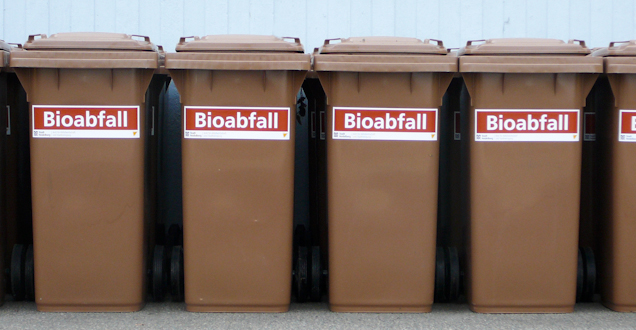
Kitchen and green waste
Kitchen and green waste
Turning biowaste into high-quality compost
Kitchen and green waste are too precious to put in the residual waste bin – they go in your brown biowaste bin. The contents are taken to Wieblingen composting center, where they are turned into various high-quality, low-peat potting and seed composts that members of the public can buy at reasonable prices in the five Heidelberg recycling yards (Recyclinghöfe) for their own gardens, flower pots and balconies.
Sort it!
But waste needs to be properly sorted before it can be turned into compost. If there are any foreign substances mixed in with the waste, these need to be painstakingly removed at the composting center in order to achieve an efficient composting process.
What goes in the biowaste bin:
Egg shells, coffee and tea filters, fruit and vegetable peelings etc. (including orange and banana peel), cut flowers, hair, newspaper for wrapping the waste, weeds, etc.
What doesn’t go in the biowaste bin:
Dust etc. swept off the floor, cat litter, vacuum cleaner bags, diapers, sanitary products, cigarette butts, bones, medicines, fabric, wool. This is all residual waste, and goes in the residual waste bin (Restmülltonne). Plastic bags must also not be put in the biowaste bin.





